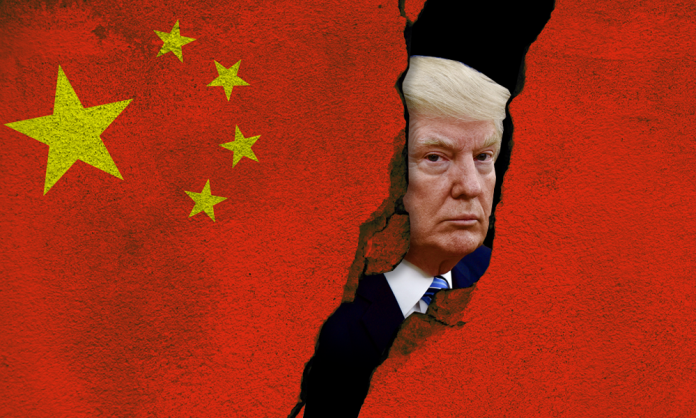The market’s taking traders on a wild ride today as Trump’s latest trade war volleys send shockwaves through Wall Street.
After breathing a momentary sigh of relief over delayed tariffs on Mexico and Canada, investors got slapped with the harsh reality of escalating U.S.-China tensions. Trump’s 10% tariff on Chinese imports kicked in at midnight, and Beijing wasted no time hitting back with its own arsenal of retaliatory measures.
China’s counterpunch includes 15% import taxes on U.S. crude oil, machinery, and select automobiles, plus a 10% tariff hike on coal and liquefied natural gas. The tit-for-tat exchange initially sent stock futures tumbling overnight, though markets have since found their footing.
The Nasdaq Composite is showing surprising resilience, up 1.2% as tech stocks shake off trade concerns. The broader S&P 500 has gained 0.7%, while the Dow is managing a modest 0.2% rise.
Palantir stands out as today’s clear winner, rocketing 25% higher after crushing earnings expectations. The data analytics darling has now surged an astronomical 380% over the past 12 months.
But it’s not all smooth sailing. The latest JOLTS report revealed job openings fell more sharply than expected in December, dropping to 7.6 million versus economists’ forecast of 7.9 million. While some view this as a warning sign, others see it strengthening the case for rate cuts. Indeed, odds of at least one rate cut by June have jumped to 64.4% from 59.3% yesterday, according to CME FedWatch data.
Rosenberg Research’s David Rosenberg noted that Monday’s market reaction to the initially feared Mexico/Canada tariffs was particularly telling: “The big rally we initially saw in Treasuries suggested that bond investors were able to see the proposed tariffs for what they are: a vicious price-level shift with no lasting inflationary implications.”
But the trade war drama may be far from over. Nomura analysts are warning investors not to get too comfortable with the Mexico/Canada tariff delay. They’ve actually raised their base case probability for eventual tariffs on both countries, albeit likely at lower rates than the threatened 25%.
Looking at sector performance, it’s a mixed bag. Energy, technology, and communication services are leading the charge with gains of 1% or more. Meanwhile, traditional defensive sectors like utilities, consumer staples, healthcare, real estate, and financials are lagging in negative territory.
The Treasury market is sending its own signals, with the 10-year yield climbing to 4.56% while the 2-year sits at 4.24%. Oil markets are feeling the heat too – WTI crude has plunged 3.3% to $70.75 as traders price in potential demand destruction from escalating trade tensions.
Comerica Bank’s chief economist Bill Adams warns that Fed policymakers remain concerned about tariffs keeping inflation above target, partly explaining their reluctance to cut rates. They’re also closely monitoring how tighter immigration policies might squeeze labor markets.
As markets digest these crosscurrents, one thing’s becoming clear: volatility isn’t going anywhere. Traders who stick to their risk management plans while staying nimble enough to adapt to rapidly shifting conditions will be best positioned to weather whatever comes next.








